| Home |
| Acknowledgments |
| Conventions |
| Glossary |
| Maps |
| References |
| Links |
| Articles |
| Thumbnails |
| Species
list |
| Family |
| Next
species |
Additional Photos
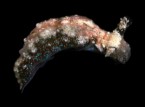
side

underside

papillate

cream, smooth

white, smooth

iridescent

violet margin

green band
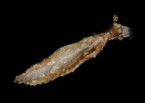
stretching
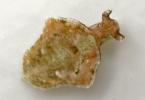
resting
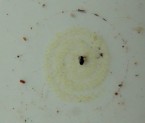
egg mass
_______________
GALLERY

Elysia sp. #10
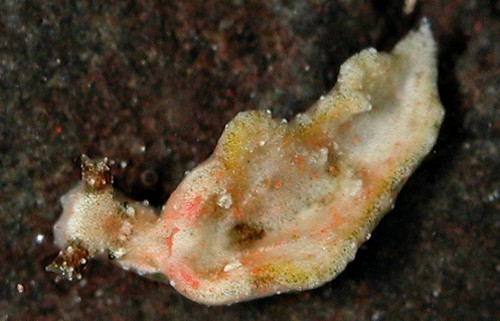
| Maximum size: 5 mm. Identification: This is a small, highly variable and cryptic species. The parapodia are proportionately thick with two broad, low chimneys. The rhinophores are short and there is no visible pericardium – rather, two prominent veins emerge from a shallow depression near the anterior origin of the parapodia. The body is usually mottled in cream and brown with peach blotches but may be chalky white or cream with a narrow, submarginal white line. Rarely, there may be black pigment on the parapodia. (see photo) The body surface ranges from nearly smooth to strongly papillate and strongly papillate animals usually have three pairs of enlarged tubercles on the interior of their parapodia. Natural history: Elysia sp. #10 is moderately common. It's been found in rocky habitats from < 1 to 13 m (< 3 to 43 ft) and occurs in moderately protected to moderately exposed locations. Mature animals are diurnally active. When resting at night, the parapodia are held in a widely spread, but elevated, posture giving the animal a profile reminiscent of an aircraft carrier. The egg mass is a tightly coiled, pale yellow spiral contained within a flattened mucous sheath. A longitudinal line of opaque cream pigment may be present on the outer whorl. Hatching occurs in about four days in the laboratory. Distribution: Big Island, Maui and Kauai: widely distributed in the Pacific Taxonomic notes: It was first recorded in Hawaii from Maluaka, Maui by CP on Nov. 15, 1995. Photo: CP: light, papillate; 5 mm: found by PF; Whaler's Village, Maui; April 22, 2007. Observations and comments: Note 1: ( ) |
| Thumbnails |
Species
list |
Family | Next species | Top |